Alcyonium, Balla Marina, Spuma Marina
Sea FoamAlcionion, Alcimoneum, Alcymonium, Alcionium (Greek)
Zabad al-bahr (Unani)
The name Alcyonium is applied to several species of marine zoophytes, including soft coral, sponges and holothurians. A number of different species were recognised.
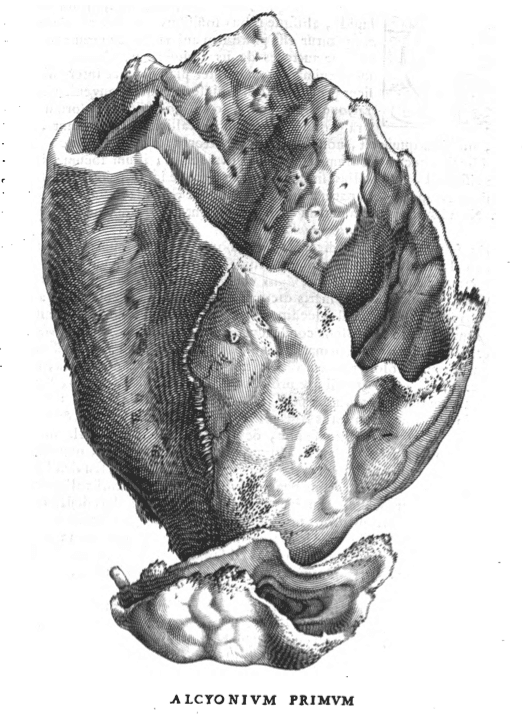
|
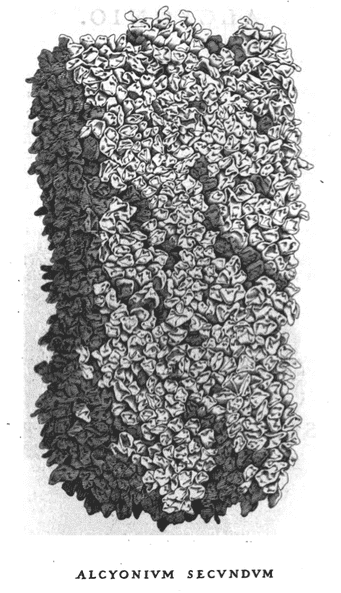
|
|
Alcyonium, the First of Dioscorides called Balla Marinae |
Alcyonium, the Second of Dioscorides |
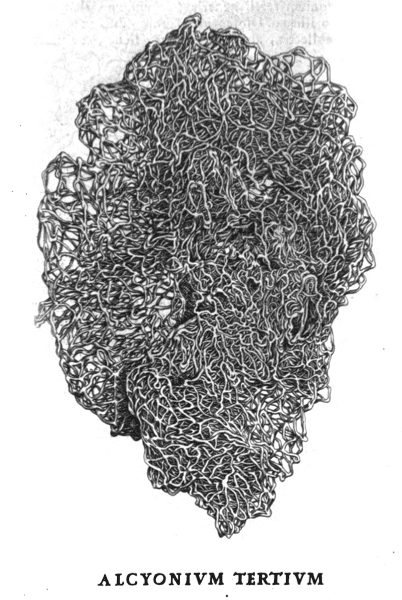
|
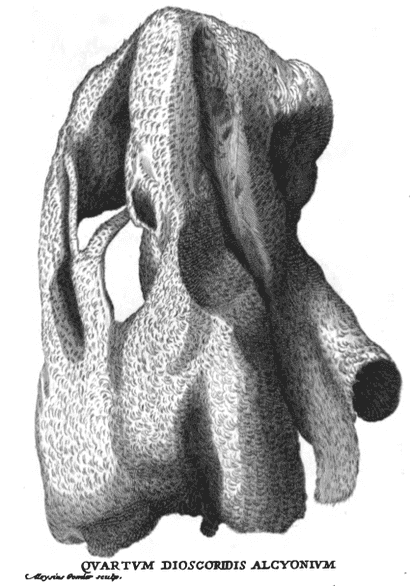
|
|
Alcyonium, the Third of Dioscorides |
Alcyonium, the Fourth of Dioscorides |
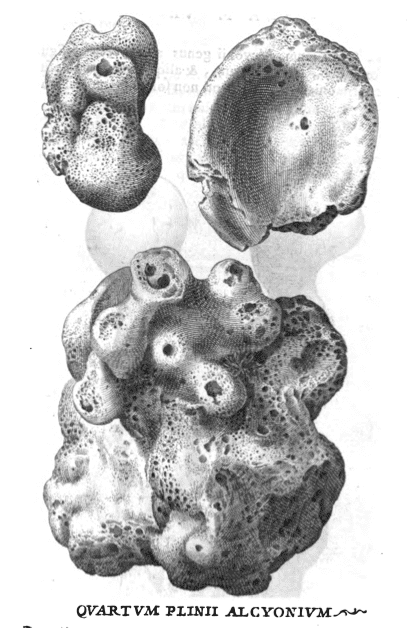
|
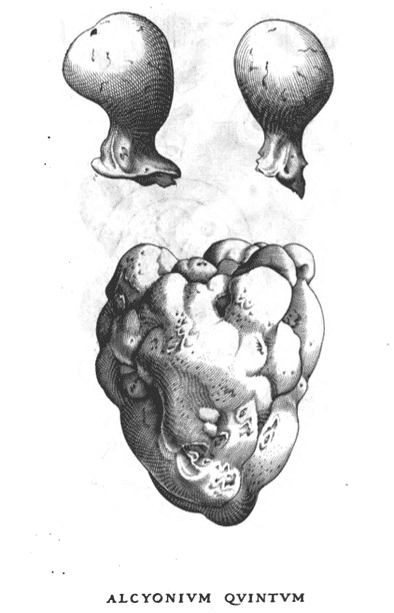
|
|
Alcyonium, the Fourth of Pliny |
Alcyonium, the Fifth of Dioscorides Called Spuma Marina |
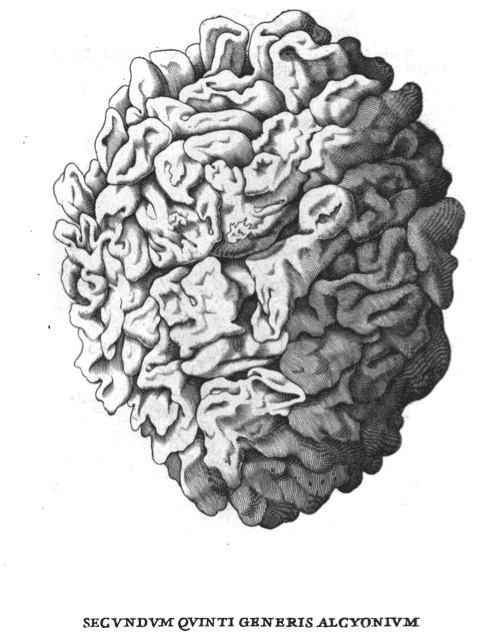
|
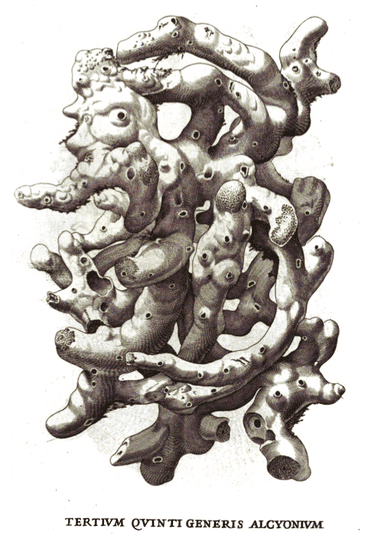
|
|
Alcyonium, a second variety of the Fifth type |
Alcyonium, a third variety of the Fifth type |
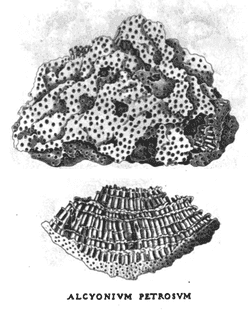
|

|
|
Alcyonium Petrosum | Alcyonium Petrosum Vermiculum |
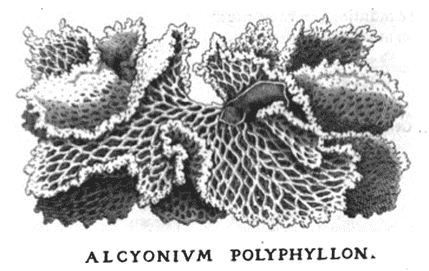
|
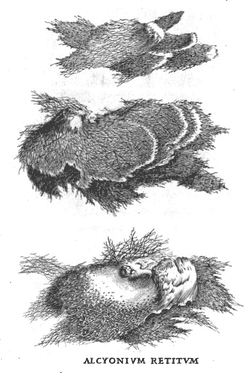
|
|
Alcyonium Polyphyllon |
Alcyonium Retitum |
Parts Used:
Galen described two main varieties: one dry, one ‘liquid’
Avicenna following Dioscorides noted 5 kinds:
- Spongy in shape and stinking in smell like the stench of rotten fish. This type is thick and found on shores.
- Spongy in shape but light, long and having the characteristic odor of sea weeds.
- Rosy and purple in color.
- Resembling dirty wool and light in weight.
- Mushroom shaped with a smooth exterior and rough interior and having no smell
Costaziae skeleton, Fu Hai Shi of TCM is a type of Alcyonium. It is used synonymously with Pumice.
Temperature:
Hot, dry. Salty
“Hot and Dry in the Third degree” (Avicenna)
Uses:
1. Clears Damp, Promotes Urine:
-Dysuria, Kidney pain
-Bladder Stones
-“The rosy variety is beneficial in cases of dysuria. nephralgia and for removing fragments of cystic calculi” (Avicenna)
2. Externally:
-Depilatory
-burnt Alcyonium is applied to Alopecia (Avicenna)
-Pityriasis (Avicenna)
-Acne, Freckles, Spots (Spongy type applied as a lotion)
-used to cleanse the Teeth (smooth type)
-Scabies and Ringworm
-
Extra Info
-
History
|
There are five kinds of alcyonium. One kind is thick with a sour taste. It looks like a sponge, is poisonous and heavy, and smells of fish. A lot of this is found on the shores. The next is shaped like pterygium of the eyes, and is light and hollow in many places, or like a sponge and with a smell like seaweed. The third is shaped like a little worm, a deeper purple in colour, and is called milesium. The fourth is like unwashed wool, hollow in many places, and light. The fifth is the shape of a mushroom, without smell, and rough, somewhat like a pumice stone within, but smooth and sharp outside. Quantities of it are found in Propontis around the island called Besbicum, in which country they call |
it the foam of the sea. Of these, the first and second are included in sebaceous treatments for women, and for freckles, lichen, leprosy, vitiligines, black patches, and spots on the face and the rest of the body. The third is suitable to use for dysuria, those who gather gravelly stones in the bladder, kidney disorders, dropsy and spleen. Burnt and smeared on with wine it thickens the loss of hair. The last type is able to whiten teeth. It is mixed with salt and included in other sebaceous treatments and psilothra [hair loss]. If you want to burn any of these put it with salt into an unfired clay pot, and having sealed around the mouth of it with clay, put it into a furnace. When the clay pot has baked enough take it out, put it in jars, and use it. It is washed like cadmia. |
